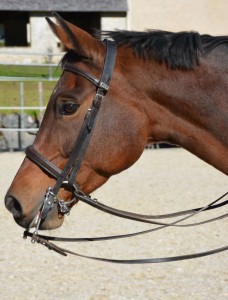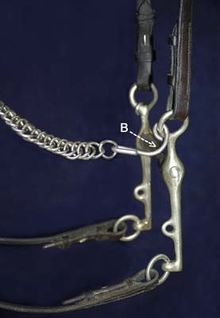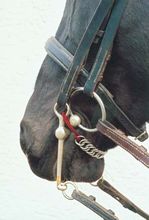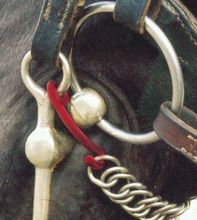HSH-Center-Curb-Bit
Licence for the HSH-Center-Curb-Bit
Since quite some years we try to get permission to use the HSH-Center-Curb-But during competition. We need as many riders as possible who are willing to test the bit and to write us a report on their experiences. An increasing number of riders confirm that their horses like the bit. Horses are much more relaxed during riding, they keep their neck and head easily in the right position. This bit is horse friendly and we ask you to help and contribute that soon hopefully many horses may enjoy this much lighter mean of communication with their rider. If you are interested see products and contact us. For the benefit of the horses!
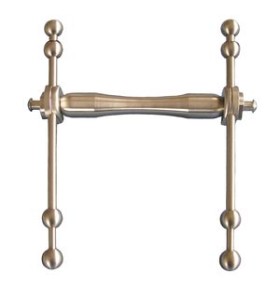 New curb bit available!
New curb bit available!
Besides the HSH-method for educating young horses with in hand work from the ground Fritz Stahlecker has developped a new curb bit. Years of studies and practical essays have brought up the HSH-center-curb bit. It is a technical improvement of the traditional curb bit and shows some essential amendments. A short overview is given of the main differences between traditional bit and HSH-bit is explained in the following text: The HSH-Center-Curb-Bit.
Special hook for the curb bit
With the double bridle you have two different bits to guide the horse. Each of them has its advantages and it was a brilliant idea to combine them. The curb bit is just ideal for the poll flexion, the bridoon has a different function, it allows to regulate the lateral flexion and for this reason is perfectly supplementing the unjointed mouthpiece of the curb bit. It is necessary that both bits function independently from each other. In this respect the double bridle you get nowadays is unsatisfactory.
Concerning the traditional curb bit a special hook for the curb chain has been developed for the double bridle. With this hook there is no longer the risk that too much weight comes on the bridoon, which is mostly the case with the normal double bridles. The HSH hooks have a bulge, which goes around the extremities of the bridoon. We highly recommend to exchange the normal hooks of the curb chain against the HSH hooks.
The hooks of the curb chain guarantee, that the curb bit and the bridoon function technically well, that they are independent from each other. The turn “B” makes a little detour around the bridoon and allows some space in between.
Leading the reins 3:1
Fritz Stahlecker’s commitment is dedicated to lightness in controlling the reins. The horse’s tongue – a tactile miracle – is extremely sensitive. One must not charge it as it is more and more the custom with several pounds of weight. Stahlecker’s recent measurements have shown that even with reins slacking 2 or 3 cm several pounds are still weighing on the tongue of the horse. For the communication between horse and rider, a few gram are sufficient. For this reason Stahlecker pleads for holding the reins 3:1. The left hand holds the two reins of the curb bit with the second and third finger.
The rider who is interested in “lègèreté” (lightness) first of all must understand why it is so important that the reins of the curb bit have to remain in one hand. There is a simple technical explanation: As the curb bit has no joint, one-sided use is forbidden. The mouthpiece would turn over on the tongue, one side of the tongue would be relieved from strain, but the other side would be overcharged with the double. This is exactly the danger when the reins of the curb bit are controled with two hands. Even the best rider cannot avoid that there is a slight relative movement in between his hands. Those relative movements are impossible with both curb bit reins in one hand.


